The more than two dozen documentaries at the 2013 Tribeca Film Festival aimed for hearts and minds and many succeeded as audience pleasers. This year’s selections, in and out of competition and as special events, straddled the world, and are notable for their timeliness, for celebrating people at a surprising variety of work, and for making history relevant to today.
THE KILL TEAM
One of the most insightful documentaries in the 2010 festival was Zachary Iscol’s The Western Front. It effectively made the case for changing the American military mission in Afghanistan from aggressive suspicion against the civilian population to cooperation. Now director Dan Krauss provides an engrossing case study that’s stunningly tragic—how the military didn’t adjust its training or infantry command structure so a restless aggressor in uniform could violently threaten civilians and intimidate men under his command.
The unit with the titular nickname, based in Tacoma, Washington, has been written about extensively in the media, including the April 2011 New York Times Magazine piece that inspired the film: a group of war criminals faked attacks to justify killing civilians. (One collected gruesome trophies from the bodies.) The film’s frank interviews with all but one of the accused soldiers add a vital, 360 degree understanding of how their different personalities contributed to what happened in 2010 in Afghanistan. They look so very young (having enlisted from ages 17-20) to be dealing with difficult moral decisions of peer pressure and whistleblowing against an experienced sergeant. He’s seen posturing in photographs and described in terms that recall the portrayal of Commandant Amon Goeth in Schindler’s List crossed with Lord of the Flies.
But there’s additional surprising emotional anguish at the home front. In this age of electronic connection to the war front, one private, Adam Winfield, reached out to his parents, begging for help against the coercive pressures around him. (Krauss explained on a Tribeca Talks “Truth, Persuasion and Bias in Documentaries” panel that he conducted these interviews while embedded with the defense team for his own legal protection.) Adam’s guilt-ridden, marine veteran father says he frantically called military and legislative offices to no avail as his nervous son became implicated in a killing. Another private inadvertently revealed the breakdown of command discipline. Winner of the festival’s World Documentary award, the wrenching film dramatically personalizes the issue of “just following orders,” which has gotten more complicated since the Nuremberg trials and My Lai, and offers disturbing evidence that “a few bad apples” excuses aren’t enough.
OXYANA
The toll from addiction to booze, heroin, crack, and meth has been shown in a lot of movies, but this may be the first eye-opener about the impact of the wildly (and mostly illegally) overprescribed opioids painkillers, such as oxycodone. TV’s Justified is full of Elmore Leonard-colorful criminals killing each other to corner the market on selling prescription drugs amidst the beautiful hollers in rural Appalachian communities, and the 2009 Tribeca Festival’s The Wild and Wonderful Whites of West Virginia treated their addled customers humorously. But debut director Sean Dunne takes a far more sober look through direct, brutally revealing conversations with addicts, their families, friends, and neighbors in one tiny town, Oceana, West Virginia. It’s much more wrenching than the feature Bottled Up (also world premiering at the festival) about such addiction, even with Melissa Leo in the cast. The pull of drugs is so powerful, especially for teenagers, that they will do anything—anything—for them, regardless of other health problems, including while pregnant. As if the region’s decades of poverty, strip mining, closing coal mines, and easy access to guns weren’t dangerous enough to their well-being.
Half the town of less than 1,500 is reported to be addicts—the death rate from overdoses and accidents is horrific. With few statistics and little context on the pill trade, only one medical professional is included, who is embarrassed by how he got fooled to write prescriptions when he first came to town. The overwhelmed local district attorney practically throws his hands up. Subtitles would help for a film that should be widely seen. When some get stoned on camera, they become fairly unintelligible once they start either slurring or speeding up their speech, depending on their drug of choice. Awarded Best New Documentary Director and a Special Jury Mention, its unforgettable impact is like watching suicide in slo-mo.
LET THE FIRE BURN
A monumental failure to communicate turned horribly destructive and fatal in the City of Brotherly Love in 1985, which is meticulously parsed through an unusually fair, and ultimately devastating, editing of an array of archival materials, which garnered a Best Editing Documentary Award. First, the context is established of the racially polarized urban politics in the 1970s. Philadelphia’s police chief Frank Rizzo rose to become a tough law and order mayor. When the government had its first violent conflict with the eccentric organization MOVE, one cop dead was dead and nine members jailed. The clips from MOVE’s videos give the group’s perspective, and testimony by ex-members shows how their repetitive rhetorical flourishes about “the system” sound like a nearly incomprehensible insular language (which has defeated other documentaries that have included the clash). Seen in TV news footage and home movies, the group also aggravated their neighbors in the working-class, African-American residential neighborhood and tried the patience of the newly-elected African-American Mayor Wilson Goode.
Key to the film’s calm, analytical approach to an incendiary topic is the extended clips from the televised hearings of the Philadelphia Special Investigation Commission, aka the MOVE Commission, that traced step-by-step how tensions fed by rumors, suspicions, and well-armed paranoia on both sides ratcheted up to the catastrophic decision to declare war on an inner-city residence. The live press coverage looks like a battle scene. Where did the buck stop over the decision to send in a helicopter with a bomb? The resulting explosion spread unimpeded over scores of homes. One renegade cop instinctively helped one burned child get out of the wreckage, where five children and six adults died, and the most moving witness testimony is from that 13-year-old. Director Jason Osder, who grew up in Philadelphia and watched the stand-off on TV when he was the same age as the young victims, has been teaching documentary filmmaking at George Washington University, and he well demonstrates to his students he knows what he’s doing in his first feature film.
FLEX IS KINGS
The East New York neighborhood of Brooklyn appears here to be teeming with dance talent. Directors Deidre School and Michael Beach Nichols find exuberant movers and shakers turning the cityscape into Cirque de Soleil (with some filmed beautifully floating in slo-mo). It looks like an elastic off-shoot from the krumping seen in David LaChapelle’s Rize (2005), the break-dancing surveyed in Benson Lee’s Planet B-Boy (2007), and Michael Jackson’s moonwalking. Among the many African-American performers of all ages and body types, who adopt colorful hip hop personas, three men are closely followed over two years, each riding this wave while trying to make a living of some kind. One, Jay Donn, gets a dancing opportunity to mix with a hipster Brooklyn theater company, where he takes his starring role of Pinocchio very personally to heart. He even makes it to the Edinburgh Festival Fringe—and kudos to the filmmakers’ Kickstarter campaign for raising the funds to film him as he followed his dream.
This documentary’s absorbing originality is particularly striking in comparison to The Motivation, a portrait of another urban competition for the fleet of fancy and fast foot, albeit one that gets an annual ESPN showcase. Director Adam Bhala Lough followed the eight diverse pro-skateboarders in the international Street League Championship with more braggart interviews than verité action until the finals. Their terrifically twisting wheels to the sky talents seem constricted by an indoor course that turns them into something like equestrian show jumpers.
RED OBSESSION
This uneven documentary uncorks the traditions and changes facing Bordeaux wine. The best part is the guided tour by enthusiastic and eloquent experts and managers of the exclusive chateaus that have been certified by the French government since 1855 as the producers of the perfect antique blend. (Francis Ford Coppola is the least interesting of a charming bunch.) Beautiful aerial views of vineyards and mansions recur through two growing seasons as a luscious reminder of the raison d’etre behind the calculating and bitter business of judging and pricing each vintage and marketing this limited luxury product to an expanding nouveau riche around the world.
The unnecessary and condescending psycho/political/financial analysis of the rise of the Chinese bourgeoisie is already well known for its impact on natural and rare resources demand everywhere. The brief interviews with wealthy wine collectors (including the largest manufacturer of sex toys) are fun in a Lifestyles of the Rich and Famous-way, but they don’t really convince that the wine’s price escalation is anything more than yet another bubble of this gilded age. Directors Warwick Ross (himself a vigneron) and David Roach travel to China’s impressive new vineyards without mentioning their native Australia, or any other place, as a possible growing competitor to France, let alone the effects wrought by climate change.
LIL BUB & FRIENDZ
Cat people alert! Does your cat have what it takes to attract millions of fans as an Internet star? From this mildly entertaining documentary, I now know why my very plain one won’t (his eyes aren’t big enough). He’s not like Lil Bub, whose deformities make him especially appealing as promoted by his amiable owner Mike Bridavsky, who has had more success marketing his beloved cat than any of his varied professions. Though woefully short of statistics or technological tips to be convincing on why this isn’t just another, albeit livelier, pop culture phenomenon, directors Juliette Eisner and Andy Capper breezily interview a few other famous Internet cats and their increasingly savvy business partners, including Grumpy Cat and the satirical Henri le Chat Noir. (If you’re not one of the billions of viewers who sought them out yourself, you’ve probably been forwarded their link to their sponsored sites.) No surprise that this won the audience-voted Tribeca Online Festival Best Feature Film award.
MICHAEL H. PROFESSION: DIRECTOR
The H is for Haneke, and this extended conversation of his films starts in reverse order, beginning with last year’s Oscar-winning Amour, interspersed with film clips and interviews with his European stars from the making-of DVD extras. Director Yves Montmayeur stays focused on the Austrian master’s films because white-bearded, twinkling-eyed Haneke steers all analysis completely away from the biographical or psychological. This documentary has to be strictly for those who have already seen his films, such as The White Ribbon (2009), Caché (2005), and the original Funny Games (1997), because the excerpts give away key scenes and the sudden, shocking plot points that have become Haneke’s signature way to explore the darkness lurking under the surface of calm society. But if you have, the philosophical discussion, particularly of his much earlier works, is illuminating, especially in how his themes have repeated yet evolved.
THE GENIUS OF MARIAN
The declining health of a parent to early-onset Alzheimer’s is, of course, a tragedy to experience, and it’s understandable that directors Banker White and Anna Fitch would want to use their filmmaking skills to help their family cope by providing visual memories to counterbalance Pam White’s cognitive losses. The unique angle (that will be seen through your tears) is that she was working on the titular biography of her mother, artist Marian Williams Steele (who died from the same disease). The lovely, comfortably large seaside house is chock full of her paintings that used her family as models. But how Pam lives evidently with such a financial and housing advantage, and a very supportive husband, just makes one acutely aware of how much more difficult this disease must be for those suffering without those benefits. HBO, as part of its ongoing documentary series on the impact of Alzheimer’s on families, will air Alan Berliner’s similar but much more intense First Cousin Once Removed in the fall of 2013. Originally posted May 3, 2013
Going Deeper into “Ripped from the Headlines”
In the new Storyscapes installations, the festival showcased five projects of crowd-sourced, interactive collaborations that used the web and other technologies. Standing out from the gimmicky and already familiar was SANDY STORYLINE, the festival’s award winner for transmedia, and part of a new documentary genre. Project Creators Rachel Falcone, Laura Gottesdiener, and Michael Premo bring in people of all ages and communities not heard on the local news (the broad accents are richly authentic) into what they call “an immersive documentary” by citizen journalists and media makers. They provided the tools for a community-generated narrative of Superstorm Sandy, as it happened to the recovery struggles, through four “channels of participation” to upload photographs, audio, video, and text onto the website and Facebook page. The hour-long excerpt from the over 250 stories collected so far was mesmerizing, and I say that not just because I was in Queens during and after the storm.
BIG MEN
The U.S. now gets almost half its imported oil from Africa. That’s where director Rachel Boynton followed a colorful greed-is-good cast of characters over six gripping and suspenseful years after the discovery of what is hailed as Jubilee Field off the shore of Ghana. Her camera is there when the first Big Man, a tall wildcatter named Musselman (this isn’t fiction—he really is a Dallas rancher) lassos millions from Big Men on Wall Street for high risk exploration and drilling. As oil prices rise, the potential profits could make their local liaison a Big Man with the President and the King—until an election may cut everybody down to size, except Big Oil. (If a corporation is a person, then ExxonMobil is another Big Man.) The diminutive director (as seen on the “Tribeca Talks: New Chick Films” panel) bravely tracks other black gold Big Men to gauge Ghana’s future: can they follow the peaceful, egalitarian development model of Norway where oil benefits the country as a whole or will they get mired in the corruption and violent disruptions endemic to the Niger Delta, where she directly gets the perspective of a Big Man rebel from his armed camp. (Maybe she avoided arrest by having Brad Pitt as an executive producer, unlike what happened to Sandy Cioffi, who earlier investigated Sweet Crude in the region.) You will not be able to anticipate who wins and who loses.
THE PROJECT
Oil money is the unseen force behind the mercenaries, pirates, hostages, clans, a secret desert training camp, murderous mutiny, and gutsy rescue. This doesn’t star Bruce Willis, but real-life ex-Special Forces Lt. Colonel Roger D. Carstens can hold onto his camera even when assassins’ bullets hit the guy behind him as he guides us through the ethical muck that is coastal Somalia today. Across three continents, directors/experienced journalists Adam Ciralsky and Shawn Efran track the staggeringly complicated (and dangerous) story of the astonishingly real (and still unfolding) story of the state Puntland Maritime Police Force. It was set up by the likes of the former head of the notorious Blackwater security firm to free the vital shipping lanes around the horn of Africa from the expensive scourge of violent ransom seekers. While the strong personalities on screen defy Hollywood stereotypes of do-gooders and villains, the emotional focus exhaustingly stays on the innocent victims and the very unpredictable people trying to do the right thing for them. (The U.N.’s arms embargo against Somalia comes across as more naïve than effective, and you’ll rethink “South African mercenary” as a reflexive pejorative.) This project has to be seen to be believed.
IN GOD WE TRUST
Since Bernard Madoff was arrested in December 2008 for running a giant Ponzi scheme, there have been many pointed fingers on film, including Jeff Prosserman’s Chasing Madoff (2011). Debut directors Victor Kubicek and Derek Anderson reuse familiar images of Madoff before and after infamy, but much is new here and engrossingly revelatory, as told by his long-time personal secretary Eleanor Squillari. She is determined to turn her own shock at his deception, and the loss of her and her family’s life savings, into helping the FBI. She is mortified that the mammoth crime occurred around her while she was as oblivious as his sons. (She also provides some sad insight into the Madoff family dynamics: “The mother chose her husband over her sons.”)
Much has been made of the mysterious 17th floor in the headquarters where money went in and fictitious financial reports came out. Squillari had been allowed to briefly enter that door, enough to remember the layout and name the names of who worked where to try and figure out what each really did. The documentary glaringly establishes the jarring educational and social gulf between the country club set, who fanned Madoff’s false Midas image, vs. the loyally silent bus-and-tunnel employees who reaped lavish rewards even as the end was nigh. She diligently tries to figure out his real financial finagles from the appointment calendar and Rolodex she kept, which also leads to some eyebrow-raising conspiracy theory charts of global money laundering to explain Madoff’s continued stonewalling in jail. (One irony: the late financier Jeffry Picower, whose key role is targeted here, bankrolled the charter schools highlighted in Davis Guggenheim’s Waiting for Superman.) While Squillari is driven to help devastated small investors get some justice, let alone some kind of restitution, the ranting about the limits of the Securities Investor Protection Corporation is a little unclear when the stock market is inherently riskier than a federally insured bank account, despite the alchemist appeal of Madoff’s claim to spin gold with a magic formula.
DANCING IN JAFFA
Sure the opening set-up sounds like a corny take on doing Mad Hot Ballroom in Israel, with the gimmick to pair up Israeli Jewish and Israeli Arab children in the mixed but pretty much segregated neighborhood of Jaffa, adjacent to Tel Aviv. Yes, it’s the same “Dancing Classrooms” program, and the work of its Jaffa-born founder, Pierre Dulaine—to bring the confidence, self-esteem, discipline, etiquette, and, most of all, respect, of ballroom dancing to urban schools—has already gotten the Antonio Banderas bio-pic treatment in Take the Lead. But director Hilla Medalia captures tensions in verité style—how he is warned away from his family’s home that he hasn’t seen since he fled as a child in 1948; or how the Muslim community has become more overtly religious than when his Palestinian mother married his Irish father so that any male/female touching is a sensitive issue.
Just when all looks as hopeless as peace in the Middle East, he calls in his championship partner of more than three decades, the elegant Yvonne Marceau, and the magic they demonstrate in dancing together seems to spread fairy dust over everyone. From there, the usual trope of cute-kids-in-competition is poignantly heightened as students, parents, and teachers dance through traumas from the political violence and the cultural differences. All begin to see each other as individuals with commonalities and blossom through the rehearsals and shared applause. An impossible dream comes true.
Men and Women at Work: Fishing and Fishing for Compliments
RAW HERRING
It takes tough men to satisfy the Dutch passion for gulping down fresh herring whole, like seals, right off the boat each May and July. Locavores crave the raw fish brought in by the last two Dutch ships to carry on the risky, 800-year-old tradition of plying the North Sea. The Helmrich family of documentary filmmakers (siblings and son) set sail with the fishermen out of the northern Netherlands village of Katwijk for the weeks-long search for the right catch, in competition with the larger Norwegian fleet. This hard-working documentary is clear-eyed in showing the problems they have foisted on themselves—longer searches in over-fished waters—and then the mechanized efficiency of quickly turning the vessel into a factory for measuring, filleting, salting, freezing, and packing the fish in a race against the exacting freshness standards of inspectors and gourmands. Serve with chopped onions!
KISS THE WATER
Salmon fishing in Scottish rivers wouldn’t be possible without artificial fly lures, the thumb-nail sized colorful contraptions that mysteriously entice the fish onto hooks. For more than 50 years, Megan Boyd disdained fishing, but with thousands of flies she perfected the exquisite art of tying bits of exotic feathers, fur, tinsel, and floss together in classic patterns only a few can master. Inspired by the 2001 New York Times obituary when she died at age 86, director Eric Steel reconstructs her eccentric life and arcane work through an unusual and beautiful bio-doc from her now-abandoned off-the-grid cottage in the scenic highlands overlooking the North Sea.
A dozen classmates, neighbors, and local ghillies (vacation sport guides for the many toffs who were among her loyal customers, including Prince Charles) tell delicious fish stories in fulsome brogues of the pants-wearing, fast-driving, yet isolated life they observed. Boyd spent long days by the window spinning ties (and ruining her eyesight working without electricity), and her inner life is imagined in dreamscapes through Em Cooper’s gorgeous, thickly hand-painted animation. By the time we see one closing photograph of Boyd, she already seems a towering figure.
MISTAKEN FOR STRANGERS
Rock ‘n’ roll is a job, so a familiar tale of battling siblings in bands is a story about a family business. But the dynamic is different here than usual when the older, handsome lead singer/alpha brother Matt Berninger hires his schlumpy, shambolic kid brother Tom as his roadie for the first international tour for the up-and-coming indie band the National. (Ironically, the band includes two other sets of brothers.) While Matt is married and raising a toddler in hipster Brooklyn, Tom still lives at their parents’ Cincinnati home and makes very low-budget horror shorts set to his favorite heavy metal songs. Much more a family story than a concert tour (barely one song is seen completely performed—don’t worry, they don’t do “A Lot of Sorrow” over and over as they just did for six hours straight at MoMa PS1), Tom the director is as cheerfully self-deprecating about screwing up his crew duties amidst seeing Europe for the first time as he is regarding his procrastination to complete this charming portrait. Sister-in-law Carin helps with the editing, or maybe she wants to get him out of her basement already. The theme of the ne’er-do-well younger brother trying the patience of the driven, more successful elder brother is usually mocked in politics (like with Presidents Carter and Clinton), but rarely has it been seen from such a sympathetic perspective that the rest of us can relate to.
History Comes Alive
THE TRIALS OF MUHAMMAD ALI
What more could be revealed about heavyweight boxing champion Muhammad Ali that hasn’t already been seen in so many documentaries about him? Director Bill Siegel convincingly hones in on the neglected significance of his transformation outside the ring from Cassius Clay, and how the media, athletic, and legal establishments ignored or belittled his inner strength, and not just by whites. A Nation of Islam recruiter near the 1964 Olympics winner’s training camp in Miami gets to the heart of the film’s spiritual story. He attracted Clay first by the explicitly racial message Elijah Muhammad was then promulgating, and passed him like a prize to the Chicago headquarters, though as much for serious education as for the publicity, as detailed by Khalilah Camacho-Ali, the strident young wife Ali met there, and Louis Farrakhan. (I expect some controversy when this is shown on PBS’s Independent Lens next year for giving Farrakhan so much screen time, let alone that he and the film don’t really clarify evolutions in the Nation of Islam’s beliefs over time in relation to the contemporary divisions of Islam.)
But their perspective is an eye-opening counter to the barrage of newspaper articles and TV clips that mocked Ali’s conversion, persisting to identify him as Cassius Clay, or at the most with an AKA. He refused to answer questions from the likes of the renowned (and condescending) sportscaster Howard Cosell when he’s addressed by his “slave name.” His conscientious objector claim is carefully sifted as not the pacifism that was widely decried as hypocritical for a pugilist, but a religiously principled refusal against the white man’s war on the Vietnamese. The denial of his claim led to years of appeals up to the Supreme Court (and there’s a surprisingly revealing explanation of the Court’s final disposition by a former clerk). Rare clips from his college campus lectures, made when Ali was barred from fighting and international traveling, chart his growth from tentative to fiery orator during a time of raging racial conflicts.
LENNY COOKE
With an assist from the cred of executive producer Chicago Bulls’ Joakim Noah, sports fans will jump to see rare footage of NBA stars LeBron James and Carmelo Anthony as young phenoms. But in taking aim at whatever happened to their 6’ 6”, 17-year-old peer Lenny Cooke when he topped them as the No. 1 ranked high school basketball player in 2001, this sadly real-life basketball version of Friday Night Lights crossed with Blind Side has wider appeal. The strongest half is the decade-old footage shot by Adam Shopkorn, an old friend of directors Josh and Benny Safdie (Daddy Longlegs).
Shopkorn followed Cooke for more than a year, recording more than 50 intimate hours on the Next Big Thing, and captured the up-close and personal subtleties of the shots missed in Cooke’s life beyond the crucial one on a court against a spectacular, more grounded James. His cascading bad decisions caught on camera are reviewed in rueful interviews with Cooke and those who tried to help him (though not the people who gave him bad advice). The film shows the easy dangers of youthful entourage-pleasing and a celebrity mind-set without the investment in competitive hard work. The cultural divide between Brooklyn and the big time looms graphically clear way before an uncomfortable reunion with Anthony, who doesn’t recognize the overweight Cooke, or his 30th birthday party that he seems to eagerly stage as if for a reality show. (The gimmicky CGI of having the older-but-wiser Cooke lecture to his teen image is redundant.)
RUNNING FROM CRAZY
The old footage from another unfinished documentary lifts this portrait of the psychically scarred Hemingway family above its determinedly self-help tone. (It will broadcast on executive producer Oprah Winfrey’s OWN channel.) Actress/author/activist Mariel Hemingway guides director Barbara Kopple through her family heritage of suicide and mental illness as a long teaching moment for her two 20-something daughters. But her older sister, model/actress Margaux, had already started this effort by filming frank family interviews before she overdosed in 1996, which poignantly haunt this documentary (and Mariel with guilt). While the least interesting time is watching Mariel energetically pursue a healthy lifestyle (with her hunky athletic boyfriend) that seems as much self-promotion as modeling positivity, her personal stake is sobering when she dons seven honor beads when she participates in a suicide prevention walk: one strand each for Margaux, her famous grandfather Ernest Hemingway, and, on both sides of her family, other relatives who have struggled with depression, including her parents and another sister.
HERBLOCK: THE BLACK AND THE WHITE
Just as Thomas Nast defined the image of 19th century politics, the editorial cartoons of Herbert Block delineated 20th century history from the Depression on with just a few bold strokes and pointed captions, under the pen name of “Herblock.” His work topped the Washington Post‘s editorial pages five days a week for 55 years (one of his four Pulitzer Prizes was for his whole body of work). The chronological discussion showcases his incisive summaries of the impact of larger economic and social forces on the poor and downtrodden, especially from government indifference and corporate greed. Post reporters note how he first checked his facts with them. The most pungent analyses reveal how his portrayals conveyed his antipathy to Senator Joseph McCarthy (damning his tactics first as “McCarthyism”) and Richard Nixon, who he targeted early on and then presciently pointed out for the Watergate break-in only six days after it occurred (which surprisingly didn’t earn him a listing on Nixon’s “enemies list” separate from the Washington Post).
Though director Stevens is a scion of the Hollywood Stevens, he’s from Washington, D.C. and only once mentions the impact of the cartoons’ national syndication. (I grew up turning to the cartoons in the then-liberal New York Post.) The slew of admiring talking-head journalists, including Tom Brokaw and Woodward/Bernstein, are knowledgeable about working with him (though none of them knew he had a life outside the office), and contemporary satirists Jon Stewart and Lewis Black put him in context for younger audiences. But the camera should have lingered over full views of the cartoons longer and presented more of them, with less screen time for the interviewees whose voice-overs would have been sufficient.
TEENAGE
Director Matt Wolf looks at 20th century history through the eyes of young people in the U.S., the U.K., and (most unusually) Germany, as inspired by music journalist/co-writer Jon Savage’s book Teenage: The Creation of Youth Culture 1875-1945. Adapting the Ken Burns style of first-person diary/autobiography readings, this very educational documentary evocatively focuses on representative individuals—particularly a burning-at-both-ends post-World War I Bright Young Thing in London, an enthusiastic Hitler Youth, a rebellious German “Swing Kid,” and a black Boy Scout in the 1940s. These and other teens are voiced by Jena Malone (as American girls), Ben Whishaw (British boys), Julia Hummer (German girls), and Jessie Usher (African-American boys). They personalize an extraordinary compilation of rare clips, even color home movie pranks shot by Hamburg teens that got them in trouble with the Nazis. (Lead archival researcher Rosemary Rotondi could be considered a co-director in finding 90 hours of unique footage and over 4,000 images from the past.)
But Wolf sees himself as a punk storyteller, rebelling against authoritarian documentarian historiography, and he unfortunately blurs these terrific real sources with artistic recreations and paraphrasing. They cheapen otherwise perceptive insights to, well, a sophomoric and didactic level. This is particularly a problem when his target audience should be adolescents who have the least experience with the original material to know when he crosses the line. Similarly, the soundtrack disappointingly eschews period selections for new in-the-style-of interpretations by Bradford Cox of Deerhunter.

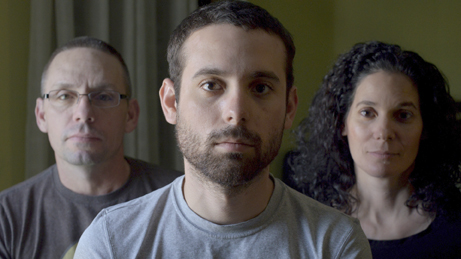
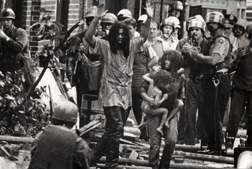
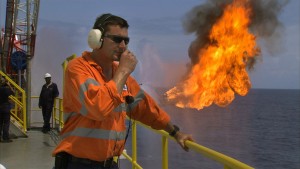
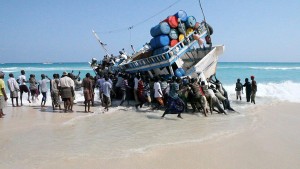


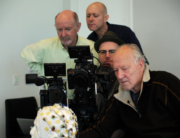


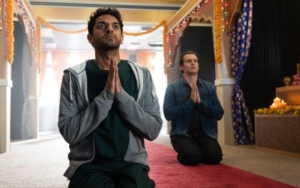
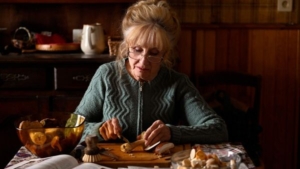



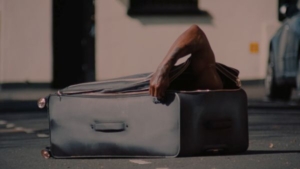




Leave A Comment